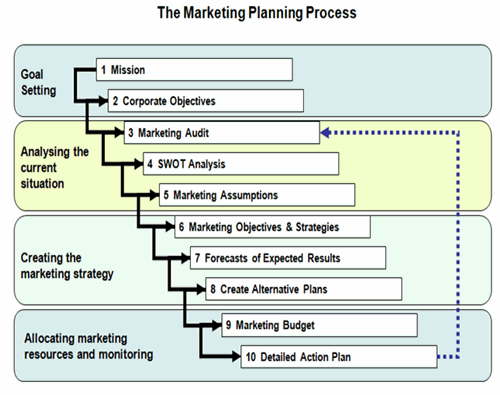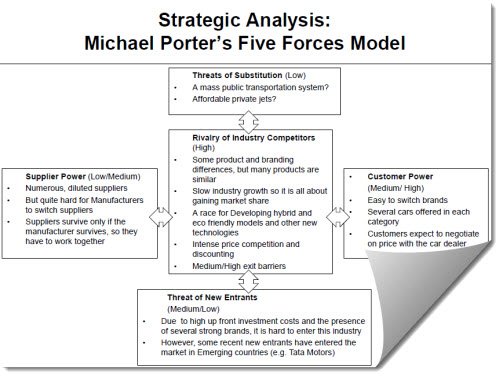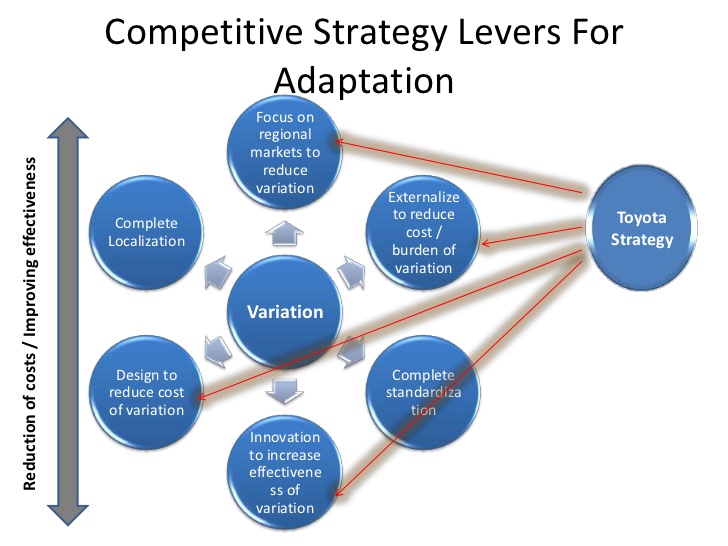Tesco Marketing Proposal
Tesco is a multinational grocery and general merchandize retailer which is based and has its origin in the United Kingdom. The organization is the third largest retailer in the world with a global presence in more than 12 countries. The United Kingdom is the main market for the organization which has been successful because of its brand reputation and image. The organization offers products and services which are according to the customers’ preferences. Tesco has been able to create a dynamic business strategy which is based upon meeting the needs of customer segments. It conducts extensive market analysis as a means of ensuring the highest levels of efficiency and effectiveness (Blythe, 2006). It has a product diversification strategy as it has transformed itself from a food retailer to offer non-food products and services like beauty products, consumer electronics, DVDs, financial and insurance services. Tesco has also been successful because it employs technology for its robust business activities. Tesco.com is one of the highest successful online shopping portals in the United Kingdom. Technology is being used to integrate and streamline business operations and achieve operational excellence. The success of Tesco has been its ability to make accurate forecasts. Tesco needs to pursue an aggressive internationalization strategy by targeting new markets. China is a potential market which can help to achieve its business goals. This proposal will seek to elucidate the importance of penetrating the Chinese market.
Literature Review
Globalization has been a powerful social and economic force which has a profound influence on the business environment of the twenty first century. The creation of a single market has led to the development of numerous opportunities for organizations as they strive to focus on emerging economies (Beamish & Ashford, 2008: p. 76).Moreover, the nature of globalization is such that there is an emphasis on remaining profitable by taking advantage of the opportunities that specific markets offer. Globalization creates intense competition which can lead companies to reduce their costs and improve their products. Organizations under competition have to perform at optimum levels by offering superior products and services. Technological adaptation is another byproduct of this phenomenon as it can help to streamline and automate the key processes. This has further increased competition among international corporations and has allowed them to expand their businesses across the globe. In the supermarket industry, international companies such as Tesco and Walmart are some of the prominent names that have successfully expanded their businesses internationally. These expansions allow organizations to increase their presence in the market, sustain competitive advantage, generate revenues and win loyalties of customers(Blythe, 2006, Beamish & Ashford, 2008, Darwar& Chattopadhay, 2012). Their marketing strategy is based on meeting consumer demands and ensuring that they adapt within the market they operate.
The production and manufacturing capabilities of organizations are enhanced when they take advantage of low labor rates in developing countries. The results are that production costs are reduced while selling products at competitive rates which in turn can increase the market share of the organizations (Darwar& Chattopadhay, 2012, Doyle & Stern, 2006). Organizations seeking to penetrate international markets strive to increase the value of their products and services while striving to reduce the cost base (Cravens & Piercy, 2006: p. 34).The external and internal variables can play a key role in the performance of organizations as they move into international markets. Organizations must be able to have access to technology, labor, capital, logistics, and infrastructure in order to succeed. The goal of conducting business in international markets is essential since any organization that fails to penetrate markets will witness a reduction in its competitive advantages.
The huge size of the international markets means that potential customers are living abroad. Moreover, the failure to penetrate international markets means that organizations will be unable to enhance their customer loyalty and brand recognition. Serving multiple markets in a seamless fashion is important part of success. Empirical studies have sought to identify the critical success factors which enable organizations to penetrate international markets (Haji-Basri, 2012, Levy, 2012). Firstly, organizations are able to select the best market entry mode which is according to their expertise and experience. The market entry mode should be based upon conducting research of the market in an efficient and effective manner. This is important because competitors’ analysis and customers’ behaviors can help the organization in understanding the needs of the market environment.
Secondly, organizations must be willing to leverage their core competencies in such a manner that they are able to reduce costs and improve profits. A global business strategy should be customized in accordance with the conditions of the market. Adaptation to the local market means that the organization is able to create a customized marketing strategy (Doole & Lowe, 2005: p. 76).Thirdly, the organization must be able to implement innovation at multiple levels. This approach is beneficial since it will help the organization to attain strategic competitive success. Finally, it is important for organizations to develop the robust frameworks that can enable them to create flexible, agile, and scalable business structures (Doyle & Stern, 2006: p. 93).The use of multiple strategies is important for success as it will lead to long term innovation that will benefit the entire organization.
Research Methodology
Research is defined as the process of investigating new phenomenon and validating existing theories and frameworks. It seeks to understand the theoretical assumptions behind specific studies by challenging them or modifying them. Selecting the appropriate research methodology is important part of the process. Primary research for this report will be carried out through a questionnaire which will be emailed to the business unit managers of Tesco. The benefits of primary research are that it enables the researcher to directly participate in the process. Moreover, the results can be quickly obtained through the questionnaire method. This method can save significant time. Secondary research for this report will be carried out through the systematic analysis of existing studies related to marketing and global business. Specifically, the studies will be selected based upon their relevance, reliability, and authenticity.
Secondary research is beneficial in many ways. Firstly, it helps to reduce time as existing studies can be employed for success. Secondly, it uses the vast literature in order to create a theoretical framework which can be beneficial in answering the research aims and questions of the report. Thirdly, secondary research helps the researcher to have access to resources in an efficient manner which will be used to solve the research problems (Levy, 2012).
Organizational Strategy and Market Characteristics
Empirical studies have found evidence that grocery sales in China are estimated to be around £600 billion in the year 2013 (Zhao, 2014: p. 184). There are 221 cities in the country which will witness an increase in population by the year 2025 (Zhao, 2014: p. 184). Moreover, urban dwellers are the largest customer segments which offer significant market potential for organizations like Tesco. Shopping malls are now popular places for supermarkets. The impressive standards of living among the middle class have enabled Chinese customers to focus on higher quality of life. This creates superior business opportunities for organizations like Tesco that are working in the retail market. Household spending on healthcare, transportation, and telecom services have doubled as compared with the last decade. The indicators prove that the customer segments have disposable incomes that allow discretionary spending. Tesco’s strategy in China can be based upon its key competitive advantages (Tesco PLC, 2014).
Branding and reputation are the key attributes of the organization which helps it to achieve core strategic advantage. Careful branded packaging and promotion can generate excellence value for Chinese customers (Zhao, 2014: p. 184).Supply chain management and logistics in China should be able to respond to the dynamic and complex environment by enabling Tesco’s management to make accurate forecasts. Technology can be used to maintain inventory and assess business transactions. This will help the management to make forecasts about the entire environment through the use of innovation and creativity (Levy, 2012). ICT technologies can help the organization to play a critical role in business strategy formulation. Creating value for customers and offering products that are difficult to emulate can be the core strategies in China provided Tesco is able to understand the dynamics of the market.

SWOT Analysis
Strengths
Tesco has transformed itself into an international retailer that sells food, clothing, household products, banking services, and others. The traditional market of the company has been the United Kingdom but in the past ten years, it has sought to expand into different international markets. International expansion is considered to be vital for the growth of the company as it helps to diversify income streams and enables it to take the advantages of globalization by using an efficient and effective marketing strategy (Zhao, 2014: p. 184).The competitive strength of Tesco is that it is the third largest international retailer in the world. The growth rate annually has been projected to be around 12% since the past decade. Strong partnerships with suppliers and other partners help the company to offer products and services in different markets. An effective supply chain management system helps the organization to manage its operations in a lean and flexible manner.
Weaknesses
The international expansion strategy of the company remains weak as compared with that of its competitors. Product diversification is a weakness because the profitability can be impacted because of bad debt from credit cards. Tesco has inexperience in certain growing markets like smart phones and tablet PCs. New web technologies and IT require investments which can streamline and automate the core processes (Imrie & Dolton, 2014: p. 84).
Opportunities
There are different opportunities for Tesco which can move into various product categories like digital entertainment, smart phones, and tablet PCs. Foreign markets like China, Malaysia, South Korea, and others offer significant business potential for the entire organization. Online shopping can be enhanced as a means of ensuring robust success within a short period of time. Increasing value proposition for existing and new customer segments can be a beneficial strategy by the organization as it can lead to the highest levels of efficiency and effectiveness (Tesco PLC, 2014).
Threats
Tesco can face significant threats from local and international competitors. Furthermore, the economic recession has reduced the spending power of customers which means that there can be a reduced profitability for non-food products and services. International expansion is a good option for Tesco but each country has different levels of regulation and laws which must be complied by international organizations in order to achieve critical success within a short period of time (Imrie & Dolton, 2014: p. 84).
PEST Analysis
Political Factors
The political factors inside any country can be related to taxes, legislation, and country stability. China is a rapidly emerging economy which has pursued investor friendly business policies. There is an increased demand for retailers which can help to create jobs for the local population and improve the local economy. The Chinese government is authoritarian in nature but it has been pragmatic enough to pursue policies which can help it to remain integrated with the overall global markets (Dowling, 2006: p. 91). Political stability in China is relatively high which offers a congenial environment for foreign investment. This is important because it helps to ensure the highest levels of efficiency and effectiveness.
Economic Factors
The economic factors are concerned with the costs, profits, and prices that a company must take into consideration while operating in a foreign market. The goal of the company should be to conduct an internal and external analysis which can be used to understand the dynamics of the market. China’s rising middle class enjoys highly disposable incomes which makes them one of the largest customer segments in the world (Ferrell & Hartline, 2007: p. 98).Furthermore, the middle class has awareness and perception regarding foreign brands which is considered to be part of their affluent lifestyle.
Social Factors
Social factors exert a profound influence on the purchasing behaviors of customers. Tesco needs to take into account the social and demographic changes which have taken place in China in order to formulate a robust and dynamic strategy for change (Hooley & Piercy, 2008: p. 123). The goal should be to create efficient and effective approaches which can be used to penetrate the market. Food and non-food items can be introduced in the Chinese market in accordance with the dynamics of the market. Customers in China have high levels of awareness and perception regarding foreign products.
Technological Factors
Operating in any market means that companies should be able to focus on operational excellence and competitive advantage. Technology helps to achieve this critical goal with the focus on achieving long term market share. The goals of companies like Tesco should be to make investments in technology which result in efficient business processes and help to provide real time data to the management which can be used in the decision making processes. Outlets should employ technology to reduce waiting time for customers. RFID can be employed for inventory management. Communication systems can be used to link main office with various outlets for making decisions and obtaining real time information (Hooley & Piercy, 2008: p. 123).The use of an integrated strategy can help to accomplish the critical goals within a short period of time.
Conclusion
Tesco is the third largest retailer in the world which has been achieved because of its core competencies. The core competencies of the organization have included the ability to successfully develop a core business model that is flexible and adaptable in accordance with the competitive nature of global markets. Strategy formulation in Tesco is based upon the use of market research which helps to achieve efficiency and effectiveness. A complete internal and external analysis is conducted by the organization in order to achieve its critical targets within a short period of time. Tesco’s strategic growth model seeks to focus on cost and product differentiation as mixed strategies that enable future growth and development. China is an attractive market for internationalization because it will help Tesco to take advantage of the business opportunities. China’s middle class segments have increased with highly disposable incomes. Moreover, Chinese customers are spending on clothes, luxury products, healthcare, and others as part of the drive to improve their quality of life. This helps to ensure the success of the retail market. Tesco can take advantage of the Chinese market by using a systematic and calculated approach. It needs to use its core competencies which can be adapted in accordance with the local market conditions. Moreover, it needs to focus on using its core competencies as a means of ensuring the highest levels of success within a short period of time. Technology can be used to maintain inventory and assess business transactions. This will help the management to make forecasts about the entire environment through the use of innovation and creativity. ICT technologies can help the organization to play a critical role in business strategy formulation. Creating value for customers and offering products that are difficult to emulate can be the core strategies in China provided Tesco is able to understand the dynamics of the market.
References
Blythe, J. (2006). Principles and practice of marketing. London: Cengage Learning.
Beamish, K. & Ashford, R. 2008. Marketing planning. London: Elsevier Science
Cravens, D.W. & Piercy, N.F. 2006. Strategic Marketing. 8th ed. New York: McGraw Hill.
Dawar, N. & Chattopadhay, A., (2012). Rethinking Marketing Programs for Emerging Markets, Long Range Planning 35: 457-474 (2002).
Doole, I. & Lowe, R. 2005. Strategic marketing decisions in global markets. London: Cengage Learning.
Doyle, P. & Stern, P. 2006. Marketing management and strategy. 4th ed. Harlow: Times Prentice Hall.
Dowling, G. 2006. Marketing for marketing managers. Oxford: Oxford University Press
Estrin, S. & Meyer, K. E., (Eds.), (2004). Investment Strategies in Emerging Economies. Cheltenham: Elgar Publishing
Ferrell, O.C. & Hartline, M.D. 2007. Marketing strategy. 4th ed. Ohio: Cengage Learning
Haji-Basri, M. 2012, “Marketing Research Contemporary Themes and Trends”, Interdisciplinary Journal of Contemporary Research In Business, vol. 4, no. 5, pp. 17-24
Hooley, G., Piercy, N.E. & Nicoulaud, B. 2008. Marketing strategy and competitive positioning. 4th ed. Essex: Pearson Prentice-Hall.
Levy, SJ 2012, ‘Marketing management and marketing research’, Journal Of Marketing Management, 28, 1/2, pp. 8-13, Business Source Complete, EBSCOhost, viewed 25 January 2015
Zhao, S. (2014). Analyzing and Evaluating Critically Tesco’s Current Operations Management. Journal of Management and Sustainability, 4(4), p184
Imrie, R., & Dolton, M. (2014) From supermarkets to community building: Tesco PLC, sustainable place-making and urban regeneration. Sustainable London?: The future of a global city, 173
Tesco PLC (2014) Tesco PLC Annual Review and Summary Financial Statement 2012. Tesco PLC. Retrieved 26 January, 2015




